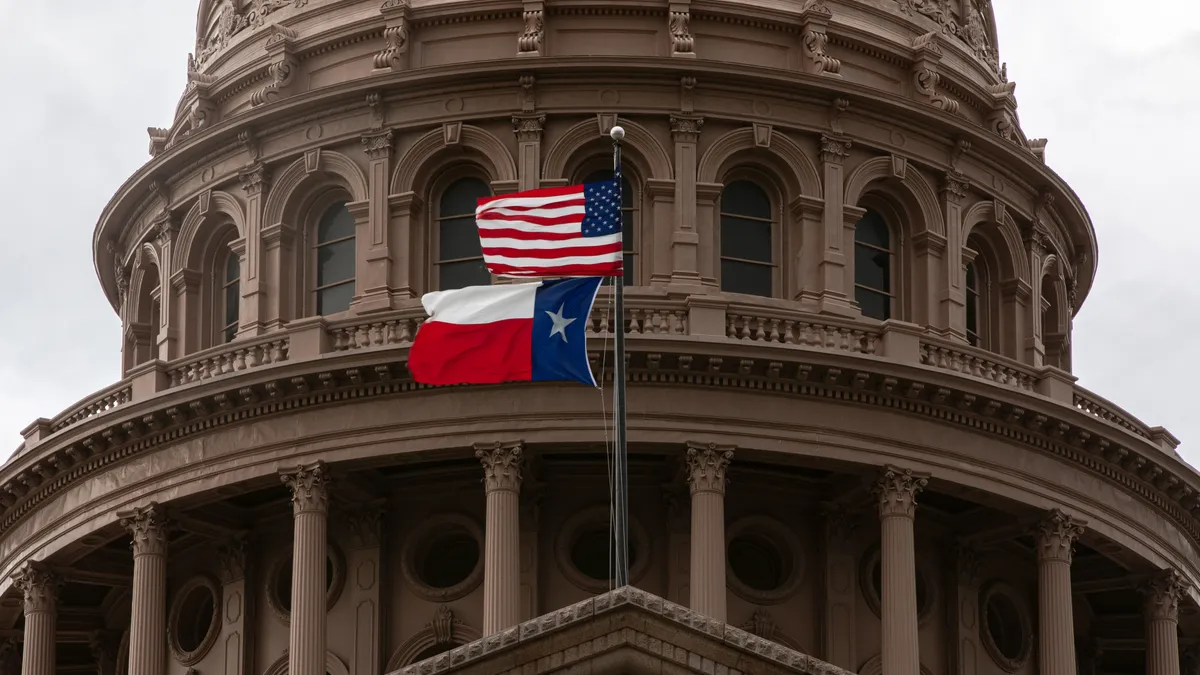The U.S. Department of Education debuted a sweeping regulatory package Tuesday fortifying federal oversight of financially unstable colleges, including by broadening the circumstances in which they must supply the government with a letter of credit.
This mammoth new set of rules matches the Biden administration’s priority of holding accountable colleges it deems predatory or high risk for students. The regulations come as college costs soar, contributing to the federal loan portfolio swelling to $1.6 trillion.
The new rules also contain significant new consumer protections, like mandating colleges provide clear financial aid offers that break down cost of attendance and types of available assistance.
Notably, the regulations forbid institutions from withholding academic transcripts of students who paid for their college education with Title IV financial aid. Transcript holds prod students to pay their outstanding debts, but equity concerns over them have mounted. Critics argue the practice can hamper students’ ability to get a job or transfer to another college.
Below, we break down these and other key provisions of the rules, which come into effect July 1 next year.
Financially responsible colleges
Critics have accused the federal government of sometimes being slow to react to college closures, particularly those that occurred abruptly. An institution shutting down can scramble students’ plans, leaving them potentially saddled with debt, unclear where to transfer or unable to finish their degrees at all.
One part of the new rules forces financially shaky institutions to provide the Education Department with a letter of credit — or other proof of financial protection, such as insurance — if certain events occur.
The events include when colleges declare financial exigency, essentially a budget crisis. A college could also run into trouble if it earns a failing financial responsibility score from the Education Department because of either their debts or because they’re being sued by state or federal officials.
Colleges must disclose these events to the Education Department within 21 days.
Institutions in certain circumstances already needed to post letters of credit, a type of financial collateral to protect against government losses. But the new rule expands these “triggers.”
The agency may also ask for a letter of credit in other circumstances, like if a college’s accreditor takes action against them, including putting them on probation. The Education Department is calling these “discretionary triggers.”
These discretionary triggers give pause to the American Council on Education, higher ed’s top lobby, said Emmanual Guillory, its senior director of government relations.
The Education Department could ask for financial collateral from colleges that close programs or locations that enroll high shares of their students, for instance. But Guillory said that colleges rework programs all of the time, which doesn’t mean they’re experiencing financial distress.
Guillory raised concerns that a White House that isn’t “reasonable and rational” could abuse the discretionary triggers to “go after certain kinds of institutions.”
New Title IV participation requirements
Colleges that receive Title IV student financial aid must sign what are known as program participation agreements, which essentially detail the stipulations they must meet to receive that money.
The new regulations introduce new conditions into the contracts that intend to shield students and taxpayers from financial harm.
Colleges that sign these arrangements can’t hold back transcripts of students who completed a term and paid for it with Title IV money. Last year, the Consumer Financial Protection Bureau, a government watchdog, said that “blanket withholding of transcripts to pressure borrowers is an abusive practice under” federal law.
The agreements also now say that the Education Department can demand teach-out plans from institutions that the agency only provisionally recognizes and regards as a closure risk. These plans detail where students can transfer to complete their degrees if their institutions shut down.
And direct and indirect owners of for-profit or private nonprofit colleges must also sign their agreements under the rule, potentially making them financially liable if they break federal regulations.
The Education Department has recently attempted to recoup costs from for-profit colleges that agency officials say have misled their students. In one case last month, the Education Department said it would try to claw back loan discharge costs from the owners of the University of Phoenix, a for-profit institution that the University of Idaho is due to acquire.
‘Administrative capability’ requirements
Colleges may also lose access to federal financial aid if the Education Department determines they aren’t “administratively capable” of handling it.
This is the piece of the rule that dictates that institutions must be straightforward in their financial aid offers, including outlining the full cost of attendance.
Financial aid offers are notoriously challenging to parse, in part because each college crafts them differently. Students may not understand the difference, for instance, between a loan and grant.
The Education Department has pushed institutions to adhere to 10 financial aid practices, which it and other federal agencies released in 2019. Those included itemizing costs and highlighting key parts of an offer, such as if a student needs to maintain a certain GPA for a scholarship.
A U.S. Government Accountability Office report last year found 91% of colleges lowball their net price or don’t provide any detail about it in these offers.
Colleges must also demonstrate they provide adequate career counseling. Guillory said this part of the rule concerned institutions because they were not completely sure how to comply.
“If you don’t have students getting hired, are you providing adequate career services?,” he said.






















